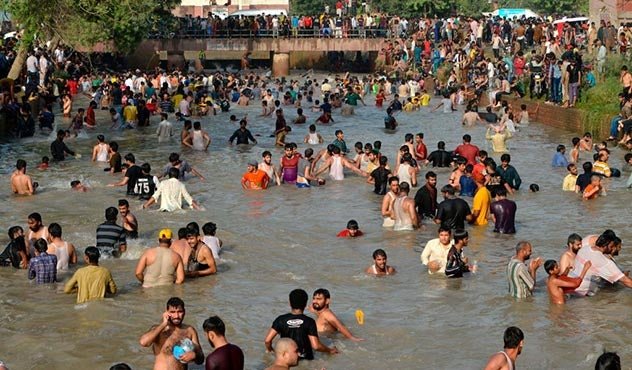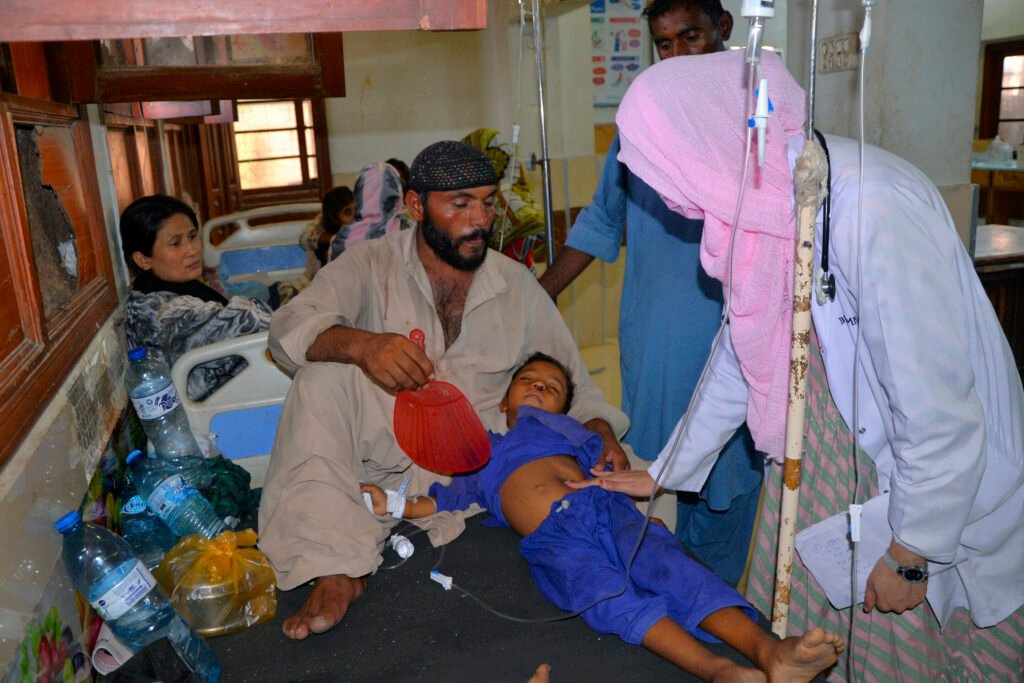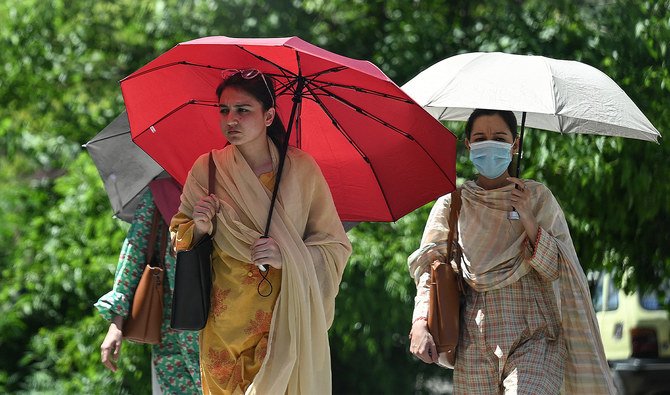Table of Contents
ToggleIntroduction
The summer of 2024 has brought unprecedented heat to Pakistan, with temperatures soaring to record highs. This extreme weather event, known as a heat wave, has far-reaching consequences for the country’s environment, economy, and public health. Understanding the causes and impacts of this heat wave is crucial for developing effective strategies to mitigate its effects and safeguard the well-being of the population.
What is a Heat Wave?
A heat wave is a prolonged period of excessively hot weather, which may be accompanied by high humidity. In Pakistan, a heat wave is typically defined by a significant deviation from the average maximum temperature, often leading to severe discomfort and health risks. The 2024 heat wave has been particularly intense, prompting widespread concern and necessitating immediate action.
Causes of Heat Wave in Pakistan 2024
Climate Change
One of the primary drivers of the 2024 heat wave is climate change. The increase in greenhouse gas emissions has led to global warming, causing more frequent and severe heat waves. Rising temperatures globally have intensified the heat wave conditions experienced in Pakistan.
Urbanization
Rapid urbanization in Pakistan has contributed to the heat wave phenomenon. Cities tend to be warmer than rural areas due to the heat island effect, where concrete and asphalt absorb and retain heat. This effect exacerbates the overall temperature increase during a heat wave.
Deforestation
Deforestation has significantly reduced the number of trees that provide shade and cooling through transpiration. The loss of forests leads to higher temperatures and reduced humidity, worsening the effects of heat waves.
Industrial Activities
Industrial activities emit large amounts of heat and pollutants, contributing to local temperature increases. Factories and power plants release heat and greenhouse gases, further intensifying the heat wave conditions.
Meteorological Patterns
Certain meteorological patterns, such as high-pressure systems, can lead to prolonged periods of hot weather. In 2024, such patterns have persisted, trapping heat and preventing the dissipation of high temperatures over Pakistan.
Effects of Heat Wave on Agriculture
Impact on Crop Yields
High temperatures can stress crops, reduce yields, and affect food security. The 2024 heat wave has led to wilting and premature ripening, resulting in lower-quality produce and economic losses for farmers.
Water Scarcity
The extreme heat increases evaporation rates, leading to water scarcity. This situation exacerbates the challenges of irrigating crops, putting additional strain on water resources.
Soil Degradation
Prolonged heat can degrade soil health, reducing its ability to retain moisture and support plant growth. This leads to long-term impacts on agricultural productivity.
Livestock Health
Livestock are also affected by heat waves, suffering from heat stress, reduced fertility, and lower milk production. This impacts the livelihoods of farmers who depend on livestock.
Measures to Mitigate Agricultural Impacts
To mitigate the impacts of heat waves on agriculture, farmers can adopt heat-resistant crop varieties, improve irrigation practices, and use shading techniques. Governments can support these efforts through subsidies and research initiatives.
Health Impact of Heat Wave 2024
Heat-Related Illnesses
Heat waves lead to an increase in heat-related illnesses such as heat stroke, heat exhaustion, and dehydration. These conditions can be fatal if not treated promptly.
Vulnerable Populations
Certain populations, including the elderly, children, and those with pre-existing health conditions, are more vulnerable to the effects of heat waves. They require special attention and care during extreme heat events.
Heat Stroke and Exhaustion
Heat stroke is a severe condition that occurs when the body cannot regulate its temperature. Symptoms include confusion, fainting, and seizures. Heat exhaustion, while less severe, can still cause significant discomfort and health issues.
Mental Health Effects
The stress and discomfort caused by prolonged heat can also affect mental health, leading to increased anxiety, depression, and other mental health issues.
Preventive Measures and Public Health Responses
Public health measures, such as issuing heat advisories, setting up cooling centers, and promoting hydration, are crucial in mitigating the health impacts of heat waves. Public awareness campaigns can also educate people on how to stay safe during extreme heat.
People enjoying in Mini rivers in Pakistan

Economic Impact of Heat Wave
Loss of Productivity
High temperatures can reduce productivity, particularly in outdoor jobs such as construction and agriculture. Workers may need to take frequent breaks or cease work altogether to avoid heat-related illnesses.
Increased Healthcare Costs
The surge in heat-related illnesses leads to higher healthcare costs as more people require medical attention. This strain on healthcare systems can be particularly challenging in regions with limited medical infrastructure.
Impact on Energy Consumption
The demand for electricity increases during heat waves as people use air conditioning and fans to stay cool. This can lead to power outages and increased energy costs.
Effects on Tourism and Outdoor Activities
Tourism and outdoor activities decline during extreme heat, affecting businesses and local economies dependent on these sectors.
Government and Private Sector Responses
Both government and private sectors need to implement measures such as improving infrastructure, investing in renewable energy, and providing financial support to affected industries to mitigate the economic impacts of heat waves.
Heat strokes is preventing health issue in Pakistan

Environmental Impact of Heat Wave
Effects on Biodiversity
Heat waves can have detrimental effects on biodiversity, causing heat stress in wildlife, altering habitats, and leading to the death of sensitive species.
Water Bodies and Aquatic Life
Increased temperatures can lead to the warming of water bodies, affecting aquatic life. Fish and other aquatic organisms may struggle to survive in higher temperatures, leading to ecological imbalances.
Air Quality
Heat waves often worsen air quality by increasing the concentration of pollutants and triggering the formation of ground-level ozone. Poor air quality poses additional health risks to the population.
Long-Term Environmental Changes
Prolonged heat waves can lead to long-term environmental changes, such as desertification and changes in vegetation patterns, affecting ecosystems and human livelihoods.
Conservation and Adaptation Strategies
To combat the environmental impacts of heat waves, conservation efforts such as reforestation, protecting water bodies, and implementing sustainable land use practices are essential. Adaptation strategies include improving infrastructure to withstand high temperatures and investing in renewable energy sources.
Conclusion
The 2024 heat wave in Pakistan highlights the urgent need to address the causes and impacts of extreme heat events. Understanding the role of climate change, urbanization, and other factors is crucial for developing effective strategies to mitigate the effects on agriculture, health, economy, and the environment. Comprehensive measures involving governments, communities, and individuals are necessary to build resilience against future heat waves.
What’s the best advice for staying safe during a heatwave?
To protect yourself during a heatwave, you should:
- Move to the coolest room in the home, especially at night.
- If it is not possible to keep your home cool, spend 2-3 hours of the day in a cool place (such as an airconditioned public building).
- Avoid going outside during the hottest time of the day.
- Avoid strenuous physical activity if you can. If you must do strenuous activity, do it during the coolest part of the day, which is usually in the morning between 04:00 and 07:00.
- Stay in the shade.
- Do not leave children or animals in parked vehicles.
FAQs
What is causing the 2024 heat wave in Pakistan? The 2024 heat wave in Pakistan is primarily caused by climate change, urbanization, deforestation, industrial activities, and specific meteorological patterns.
How does a heat wave affect agriculture? Heat waves affect agriculture by reducing crop yields, causing water scarcity, degrading soil health, and impacting livestock health. Mitigation measures include adopting heat-resistant crops and improving irrigation practices.
What are the health risks associated with heat waves? Health risks of heat waves include heat stroke, heat exhaustion, dehydration, and mental health issues. Vulnerable populations such as the elderly and children are particularly at risk.
What economic sectors are most affected by heat waves? Heat waves impact various economic sectors, including agriculture, healthcare, energy, tourism, and outdoor activities, leading to loss of productivity, increased costs, and economic losses.
How can we mitigate the environmental impacts of heat waves? Mitigating the environmental impacts of heat waves involves conservation efforts such as reforestation, protecting water bodies, improving air quality, and implementing sustainable land use practices.




















